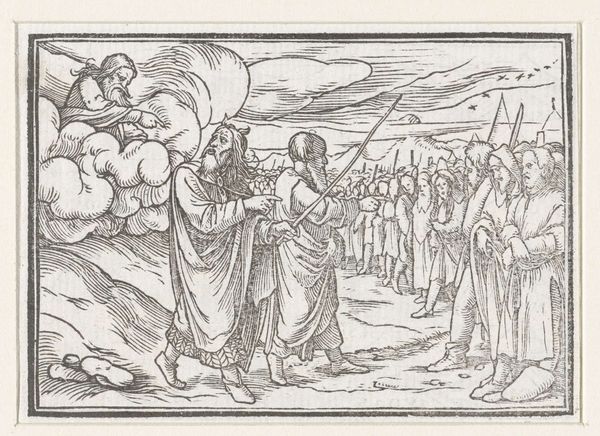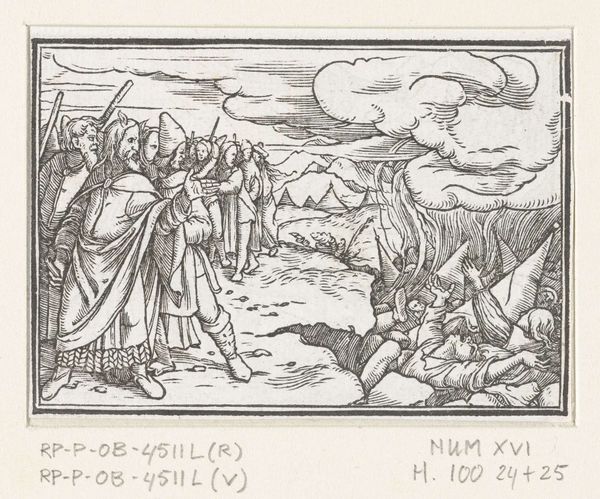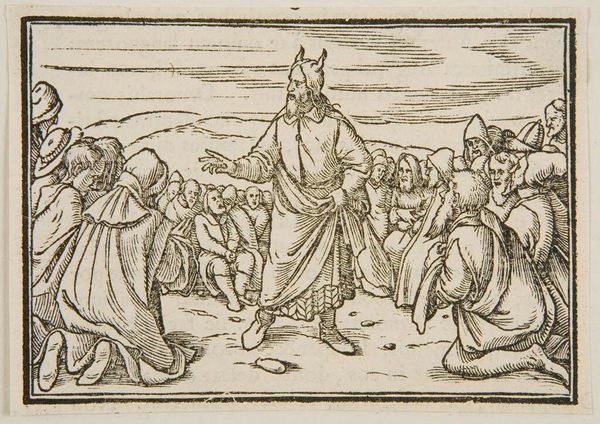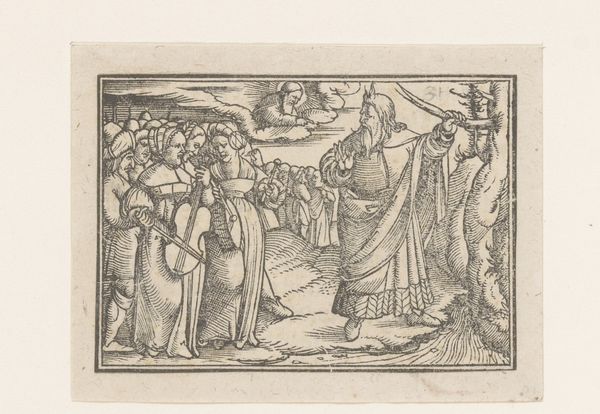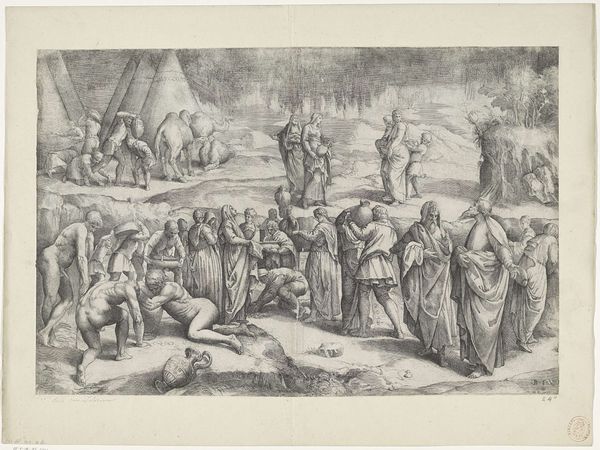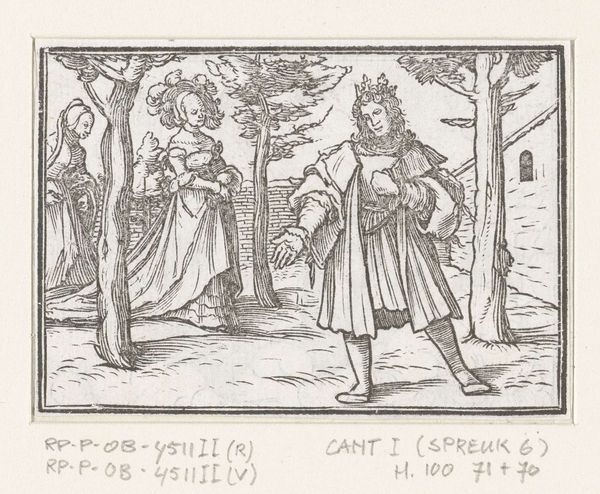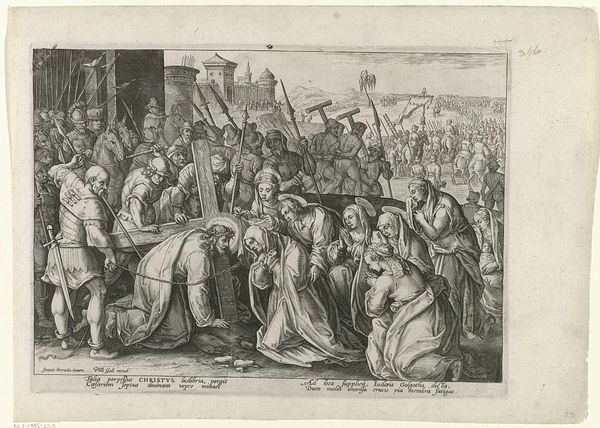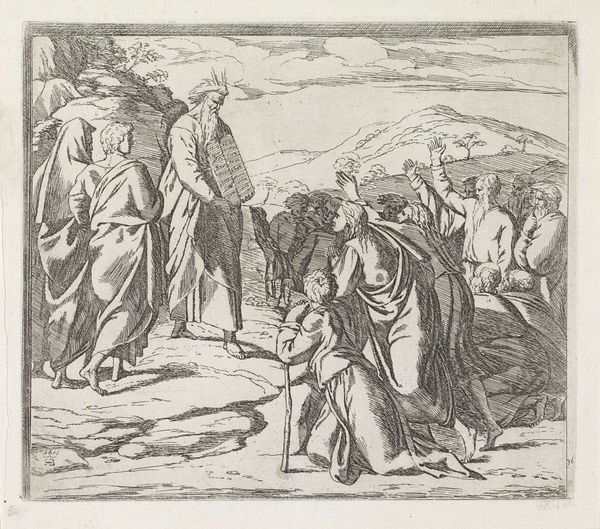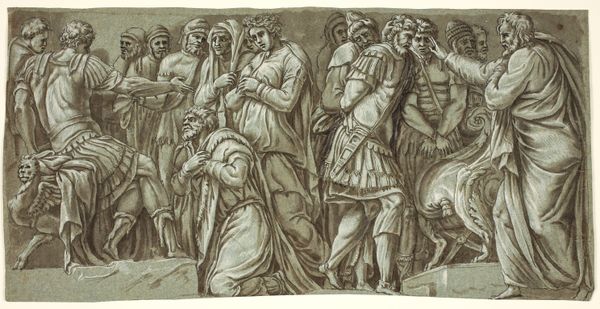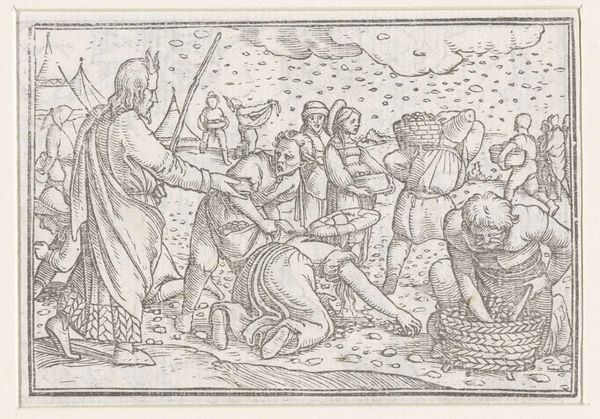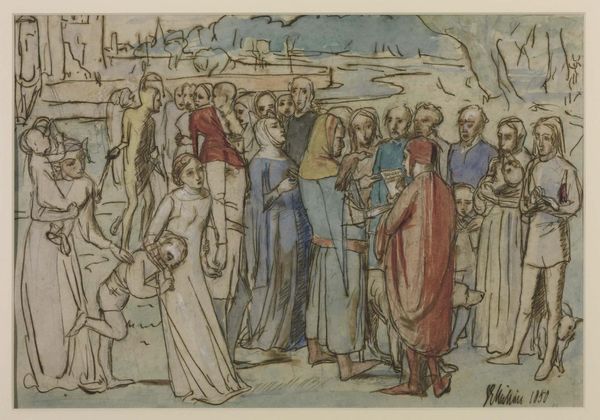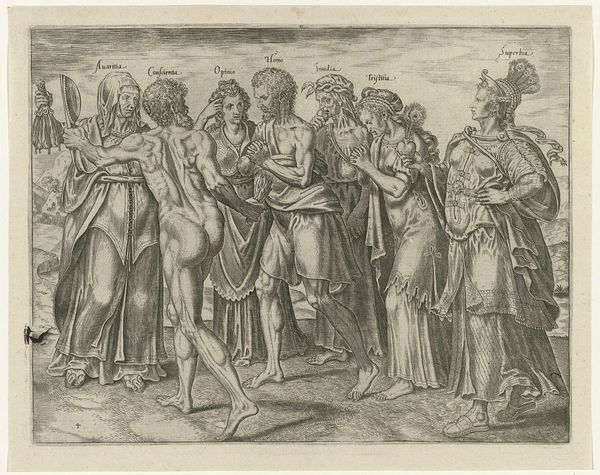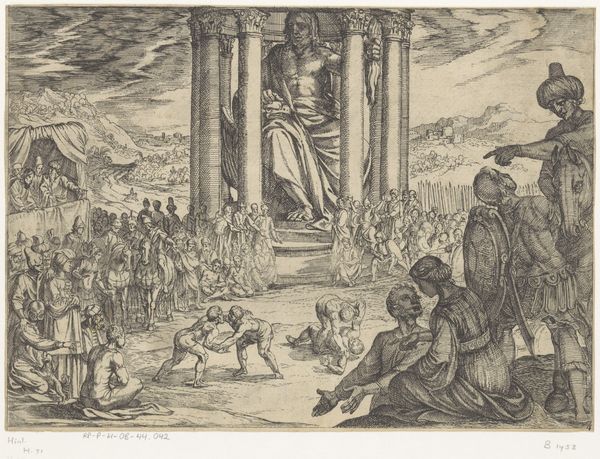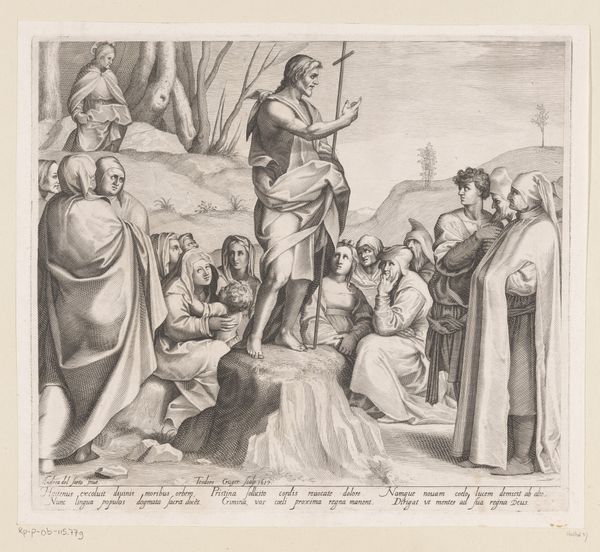
drawing, print, woodcut, engraving
#
drawing
#
narrative-art
# print
#
pen illustration
#
figuration
#
pen-ink sketch
#
woodcut
#
pen work
#
history-painting
#
northern-renaissance
#
engraving
Dimensions: height 60 mm, width 85 mm, height 84 mm, width 96 mm
Copyright: Rijks Museum: Open Domain
This woodcut, made by Hans Holbein the Younger, depicts Moses addressing the people of Israel. Created in the first half of the 16th century, it reflects the religious and political upheavals of the Reformation. Holbein was working in a world where religious imagery was intensely scrutinized. The Protestant reformers questioned the Catholic Church's use of images, leading to debates about idolatry and the role of art in religious life. Holbein navigated this charged environment by producing art for both Protestant and Catholic patrons. Notice how Moses is portrayed here. He has horns, an artistic convention based on a mistranslation of the Hebrew Bible. This detail shows the influence of religious scholarship and interpretation on artistic representation. In his role as a court artist, Holbein’s art underscores the complex interplay between religious belief, political power, and artistic expression. To understand the context in which Holbein created this work, we can study theological debates, political pamphlets, and the biographies of his patrons. Art history thrives on such research, revealing the fascinating ways in which art reflects the ever-shifting sands of social and institutional change.
Comments
No comments
Be the first to comment and join the conversation on the ultimate creative platform.
